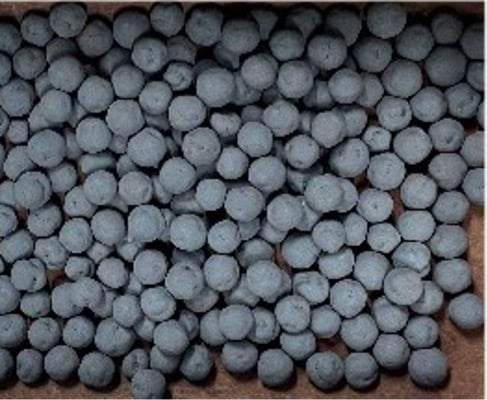Queensland Pacific Metals Ltd (ASX:QPM) and Australia’s national science body the CSIRO have obtained important technical information with hematite pellet testwork undertaken by CSIRO’s Carbon Steel Materials Group, in Queensland.

Hematite Co-Product
The laterite ore to be processed by QPM for the TECH Project has a typical iron (Fe) grade around 42%. The DNi Process dissolves Fe into solution and recovers it as a high purity hematite precipitate. The hematite product can then be agglomerated into a material suitable for direct feed to a blast furnance.
QPM engaged the CSIRO in 2022 to undertake this programme, utilising hematite product produced from previous testwork including pilot plant operations. After an initial material characterisation phase, CSIRO tested agglomeration of the hematite product using two widely used approaches:
1 – Pelletisation Testwork
Hematite pellets with properties suitable for direct feed to a blast furnace were produced under various conditions, using industrial standard methods. QPM are currently engaging with pellet plant suppliers to complete the process design and capital estimation of the commercial plant.
The pellets produced in the CSIRO testwork were below typical thresholds for impurities such as SiO2, P and S that attract penalties in the iron ore market. This will make the hematite product produced at the TECH Project an attractive feed option for steel mills, particularly when combined with the world class ESG credentials of the TECH Project. Based on this work, QPM’s preference for the hematite product is to produce pellets.
2 – Sinter Testwork
The QPM hematite product was added in increasing concentrations of up to 15% into a base blend of iron ores to determine what effect the product could have on sintering (see table below). The QPM hematite has a relatively fine particle size, so magnetite concentrates were initially substituted in Blends 2 and 3 to give a comparison between materials of a similar size. A generic Asian steel mills blend was used as the base blend.
The results showed that the green bed permeability improved with increasing amounts of QPM hematite in the blend. The sinter’s Reducibility Index (RI), Tumble Index (TI) and Mean Product Diameter all improved with the addition of the QPM hematite, while there was a marginal increase in Reduction Disintegration Index (RDI).
However, the improvement in green bed permeability did not correspond to an improvement in sinter productivity likely due to the reduced heat transfer and internal melting in the granulated particles within the bed. This resulted in a 28% reduction in sinter productivity and a 2.7% increase in fuel rate.
CSIRO’s test work demonstrated that increasing hydrated lime (HLM) concentrations from 1.5% to 4% in the sinter blend did overcome the sinter productivity loss, returning it to 40t/m2/d. There were marginal decreases in RI and TI as well as slight improvement in RDI for sinter with increased hydrated lime.
Marketing
QPM has recently appointed Geoff Beros as Technical Marketing Manager to drive the sales of co-products produced at the TECH Project. Geoff previously worked for Fortescue Metals Group as Senior Manager Technical Marketing. The testwork undertaken by CSIRO will greatly assist QPM in its ongoing engagement with potential offtake partners for the hematite product.




